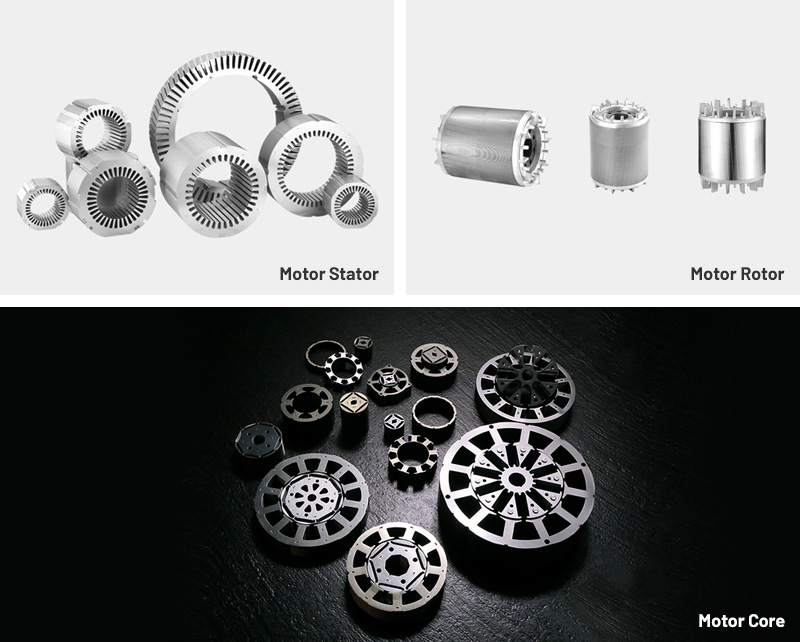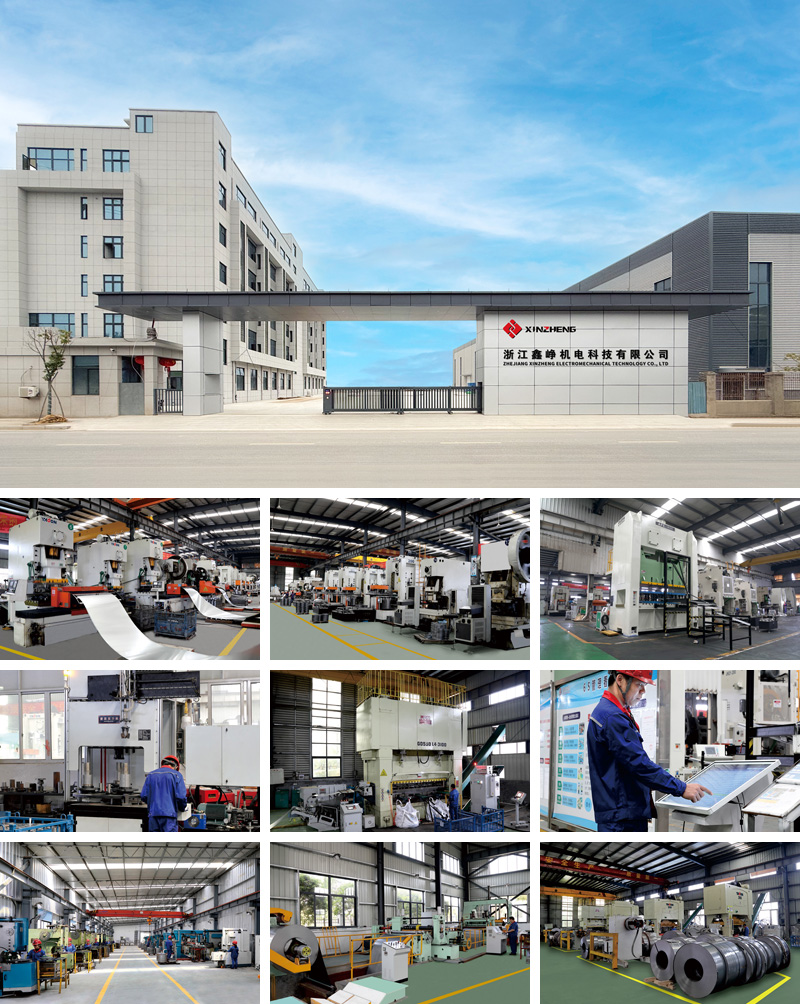Electric motors are foundational components in modern industrial machinery, electric vehicles, renewable energy systems, and high-precision automation equipment. As these applications demand higher efficiency, durability, and compact design, the quality of motor laminations has become increasingly critical. High-density laminated motor lamination is specifically engineered to optimize electromagnetic performance while maintaining mechanical stability, even under continuous or high-speed operation.
Growing global industrialization and the shift toward electrification, particularly in transportation and renewable energy, have intensified the need for motor laminations that minimize energy loss, support thermal management, and resist mechanical stress. Markets such as electric vehicles, robotics, and industrial drives prioritize laminations that ensure consistent performance over extended lifespans, reducing maintenance requirements and operational downtime. This demand has fueled the development of high-density laminations designed to deliver both electromagnetic efficiency and structural robustness.
Motor laminations are thin sheets of electrical steel stacked to form stator and rotor cores. Their primary functions are:
Reducing Energy Losses: Laminations limit eddy currents and hysteresis losses that occur during repeated magnetization and demagnetization cycles.
Providing Mechanical Stability: Laminations reinforce the motor core, allowing it to withstand centrifugal forces, vibration, and thermal expansion.
High-density laminated motor lamination specifically emphasizes reducing the air gap between layers, achieving a compact and tightly packed structure. This improves magnetic flux conduction and minimizes stray energy losses. Critical technical parameters include:
Lamination Thickness: Optimized to balance eddy current reduction with mechanical strength.
Electrical Steel Quality: High-grade, low-carbon silicon steel ensures low hysteresis and high magnetic permeability.
Insulation Coatings: High-quality insulating layers between laminations prevent interlaminar currents while maintaining thermal and chemical stability.
These design and material considerations enable laminations to maintain stable electromagnetic performance under fluctuating operating conditions.
High-density laminated motor lamination is typically produced from premium cold-rolled electrical steel. Key features include:
Magnetic Permeability: Enables efficient flux conduction and reduced hysteresis loss.
Electrical Resistivity: Limits eddy current formation.
Mechanical Strength: Supports tight stacking and resists deformation from vibration or centrifugal forces.
The high-density stacking approach reduces interlaminar air gaps, enhancing magnetic efficiency and reducing core losses. Insulating coatings are applied to each lamination to prevent short circuits between layers and to improve thermal stability during extended operation.
Die Design: Precision tooling is engineered to create laminations with intricate geometries, including slots and holes, while maintaining tight tolerances.
Stamping: Progressive stamping presses shape the laminations from electrical steel strips, ensuring uniform thickness and minimal burr formation.
Annealing: Post-stamping heat treatment relieves mechanical stress, optimizes magnetic properties, and improves structural stability.
Insulation Coating: High-quality coatings are applied to prevent interlaminar currents, resist oxidation, and maintain long-term stability.
Stacking and Assembly: Laminations are stacked to form stator or rotor cores. Bonding, welding, or mechanical interlocking ensures high-density packing and structural integrity.
This combination of precision material selection, manufacturing, and post-processing results in laminations with high magnetic efficiency, mechanical stability, and thermal reliability.
Several critical factors influence the effectiveness of high-density laminated motor lamination:
Material Purity: Impurities or inconsistencies in silicon content can reduce magnetic efficiency and mechanical strength.
Dimensional Accuracy: Variations in lamination thickness or slot geometry can increase vibration, noise, and energy losses.
Insulation Quality: Imperfect coatings lead to interlaminar currents, localized heating, and potential core damage.
Stacking Precision: Misalignment reduces mechanical stability and can affect motor balance.
Thermal Performance: Laminations must withstand continuous heat without degrading insulating layers or magnetic properties.
Strict quality control and material selection are essential to ensure laminations consistently meet performance requirements.
Selecting reliable suppliers is critical for B2B manufacturers of high-density laminated motor laminations:
Material Certification: Suppliers must provide documentation specifying steel grade, magnetic properties, resistivity, and mechanical strength.
Manufacturing Expertise: Experience with high-density stacking, precision stamping, and coating technologies is essential.
Quality Assurance Processes: Rigorous inspection protocols, including dimensional verification, coating evaluation, and core-loss testing, ensure product reliability.
Post-Processing Capabilities: Some suppliers offer annealing, surface coating, or partial assembly services, reducing production complexity.
Supply Stability: Consistent lead times, material availability, and reliable logistics support continuous manufacturing operations.
Working with reputable suppliers reduces production risks and ensures laminations meet the high standards required for industrial, automotive, and renewable energy applications.
Despite advancements in lamination technology, several challenges persist:
High Tooling Costs: Precision dies for high-density laminations are expensive and require careful maintenance.
Material Waste: Complex lamination geometries can result in significant scrap during stamping.
Coating Defects: Inconsistent coating thickness or adhesion can reduce insulation performance.
Mechanical Stress: High-speed operation and continuous duty cycles subject laminations to vibration and centrifugal forces.
Thermal Management: Laminations must maintain magnetic and insulating properties under varying thermal loads.
Addressing these challenges requires meticulous engineering, robust quality control, and strategic supplier partnerships.
High-density laminated motor laminations are widely used in sectors that demand high efficiency, reliability, and compact design:
Industrial Drives: Motors in pumps, compressors, and conveyors benefit from dense laminations that maintain consistent performance under continuous operation.
Electric Vehicles: Traction and auxiliary motors require laminations that deliver predictable torque and energy efficiency while withstanding high speeds and thermal loads.
Renewable Energy: Generators in wind turbines or hydroelectric plants rely on high-density laminations for optimal magnetic performance and long-term durability.
Robotics and Automation: Compact and precise laminations enable smooth motor operation in CNC machines, robotic arms, and assembly equipment.
HVAC Systems: Fans, blowers, and pumps operating in variable environmental conditions require laminations that combine efficiency with mechanical and thermal stability.
These laminations ensure motors operate reliably, efficiently, and with reduced maintenance in demanding industrial and commercial applications.
The high-density lamination industry is evolving to meet increasing efficiency, durability, and environmental standards:
Advanced Materials: Development of low-loss, high-permeability electrical steels enhances magnetic performance while reducing energy consumption.
Thinner Laminations: Reduced thickness allows for more compact cores with minimal energy losses.
Automated Manufacturing: Robotics in stamping, coating, and stacking improve precision, reduce defects, and increase production efficiency.
Hybrid Manufacturing Techniques: Laser cutting, etching, and additive processes supplement traditional stamping for complex geometries.
Sustainability Focus: Energy-efficient laminations contribute to reduced operational losses and environmental impact, aligning with global energy standards.
These trends indicate that high-density laminated motor laminations will remain central to next-generation motors, supporting energy efficiency, reliability, and compact design requirements.
Q: How do high-density laminated laminations differ from standard laminations?
A: They are tightly stacked to minimize air gaps, improving magnetic flux conduction and reducing energy losses while maintaining mechanical integrity.
Q: What materials are used?
A: Premium cold-rolled electrical steel with controlled silicon content, coated with insulating layers to prevent interlaminar currents.
Q: Are they suitable for electric vehicles?
A: Yes, they ensure efficient torque, thermal stability, and long-term reliability in traction and auxiliary motors.
Q: What are common challenges in producing high-density laminations?
A: Maintaining dimensional accuracy, consistent insulation coatings, and mechanical stability under high-speed or continuous operation.
High-density laminated motor lamination is a critical component for achieving high-efficiency, durable, and reliable motors. By combining premium electrical steel, precision manufacturing, and advanced insulation coatings, these laminations reduce energy losses, enhance mechanical stability, and support long-term operation under challenging conditions.
Industries such as electric vehicles, industrial automation, renewable energy, and HVAC systems benefit from laminations that deliver predictable performance, reduce maintenance, and extend motor lifespan. Innovations in materials, coating technologies, and automated manufacturing processes are driving the next generation of high-density laminations, ensuring motors meet stringent global efficiency, durability, and sustainability requirements.
By prioritizing material quality, precise engineering, and reliable supplier partnerships, manufacturers can produce motors that excel in performance, efficiency, and operational longevity.
Product Category

Comprehensive Strength


Copyright © Zhejiang Xinzheng Electromechanical Technology Co., Ltd. All Rights Reserved.
This website uses cookies to ensure you get the best experience on our website.